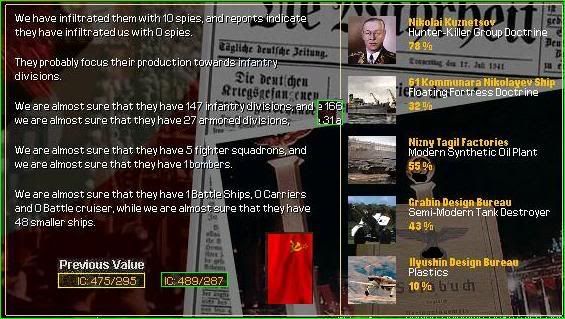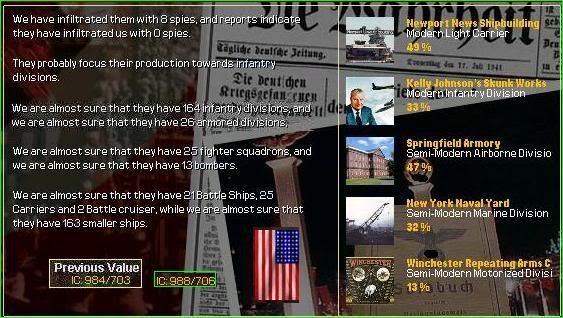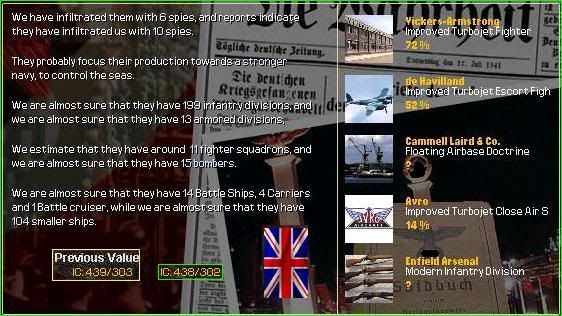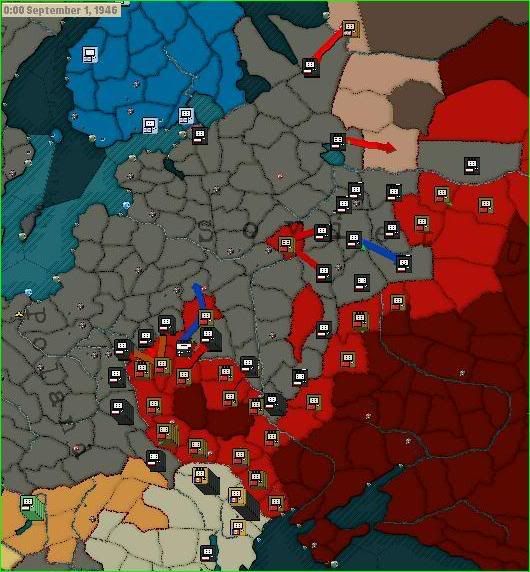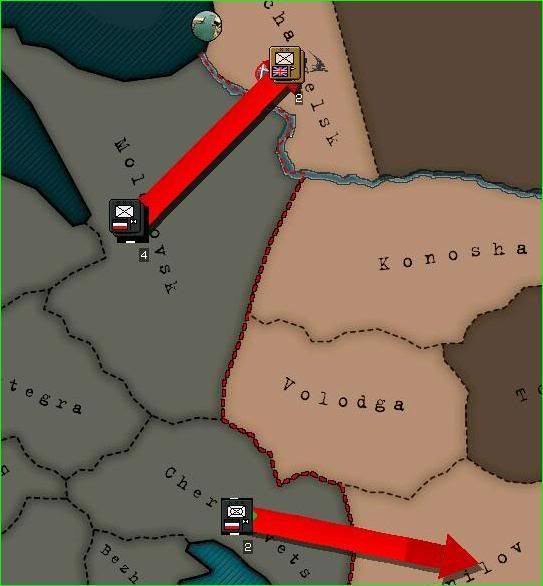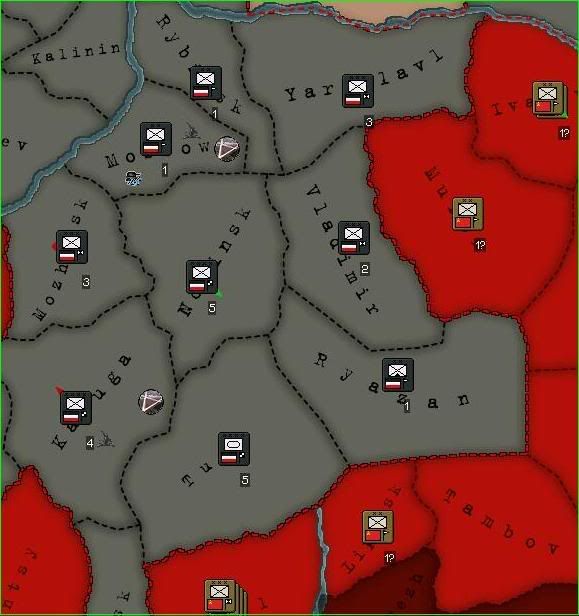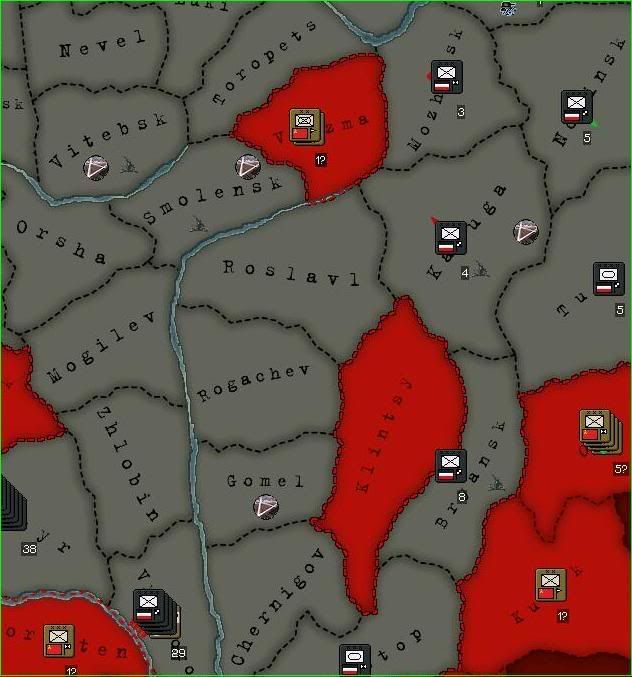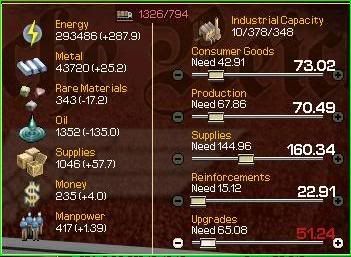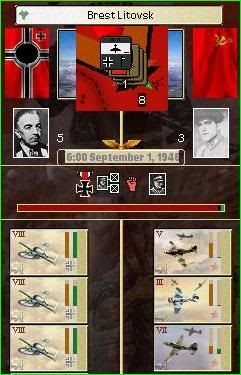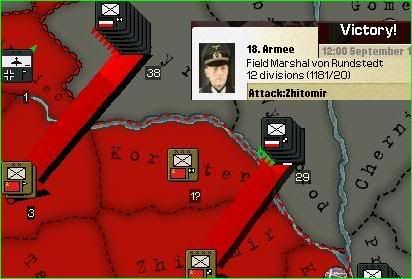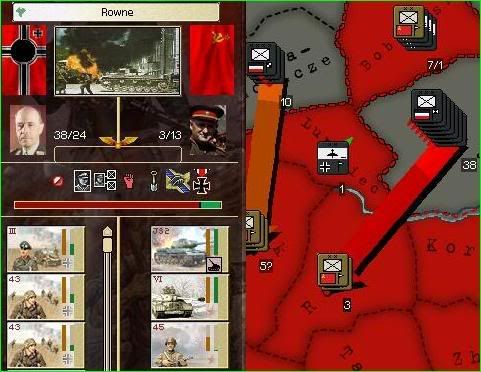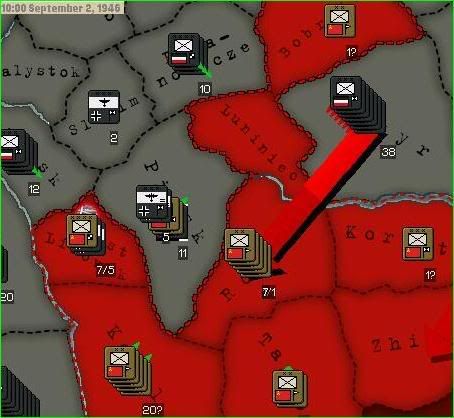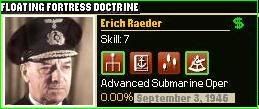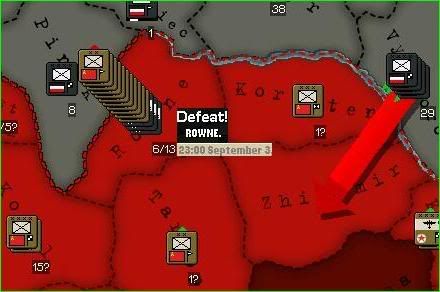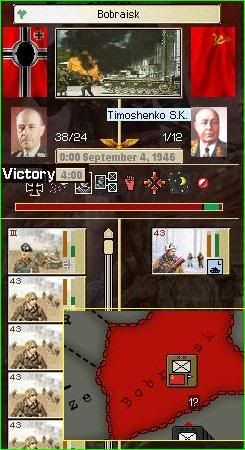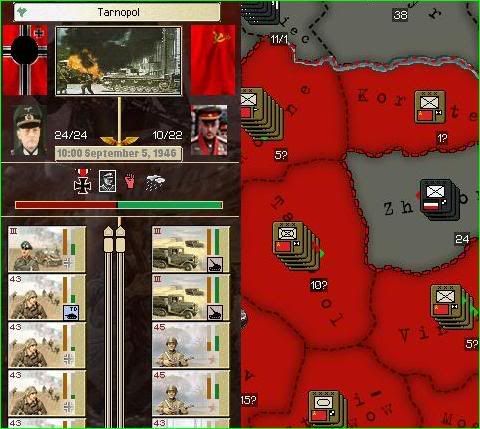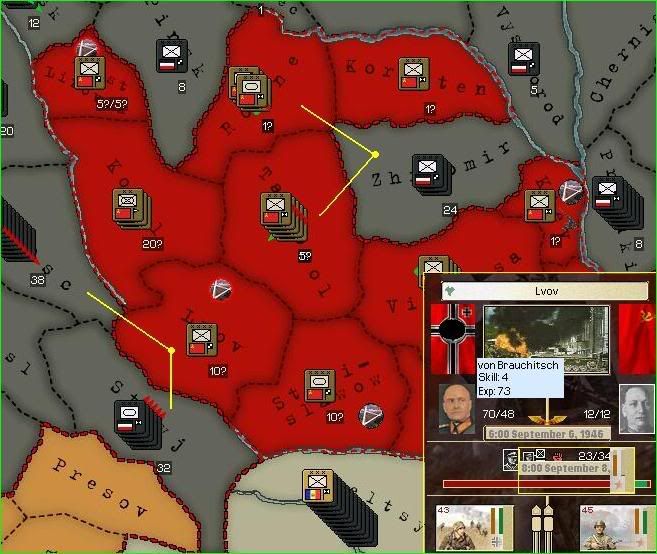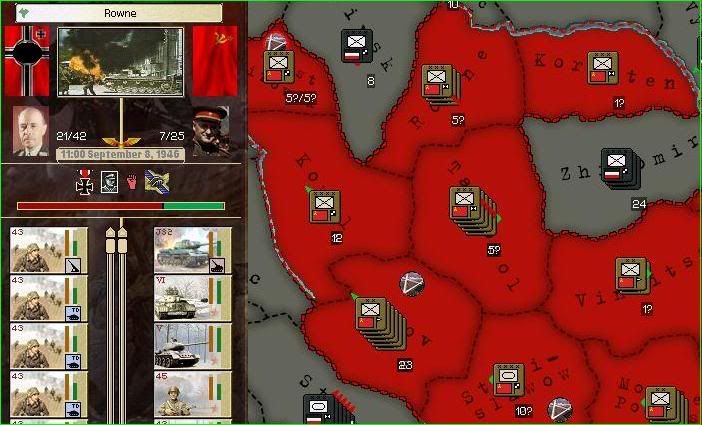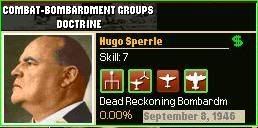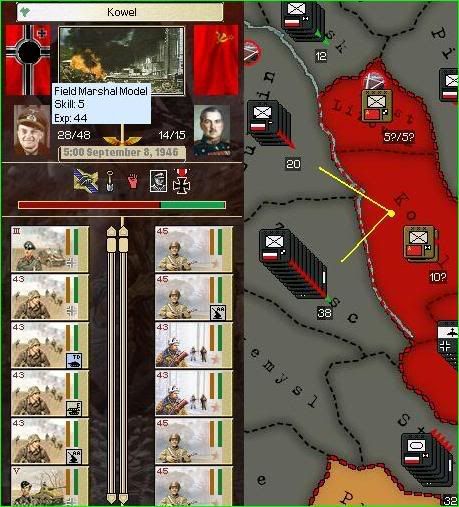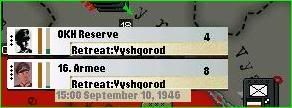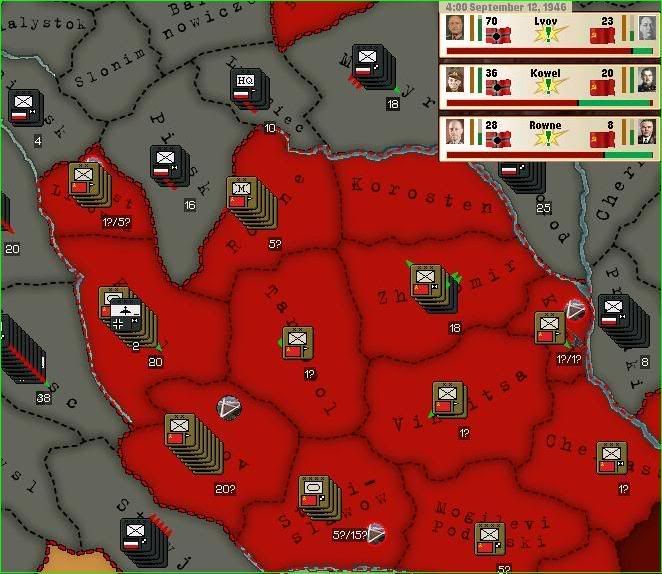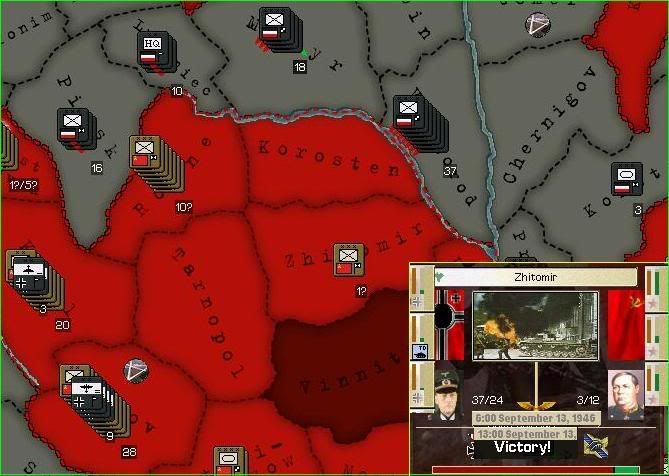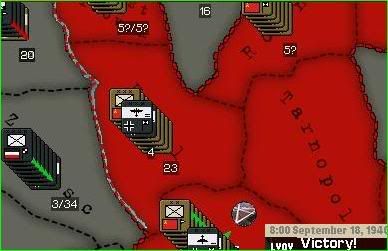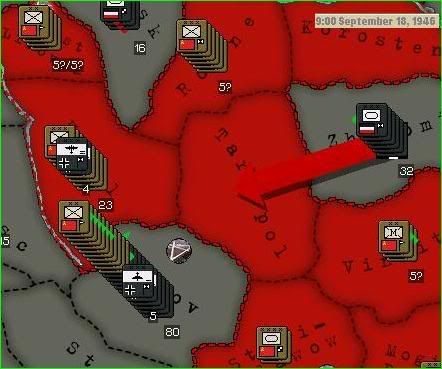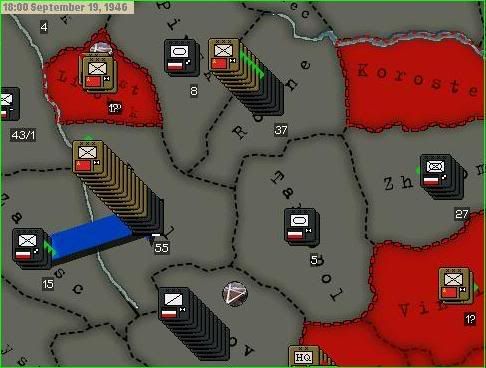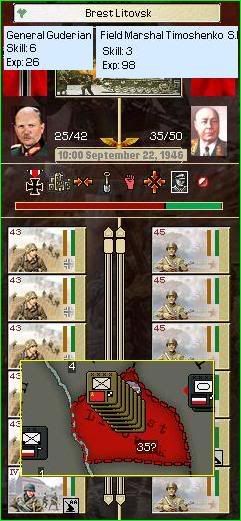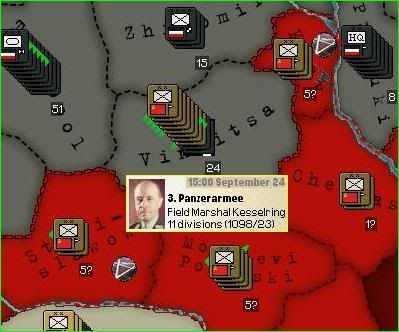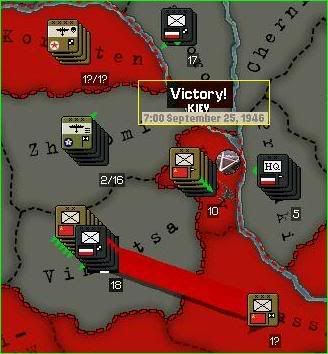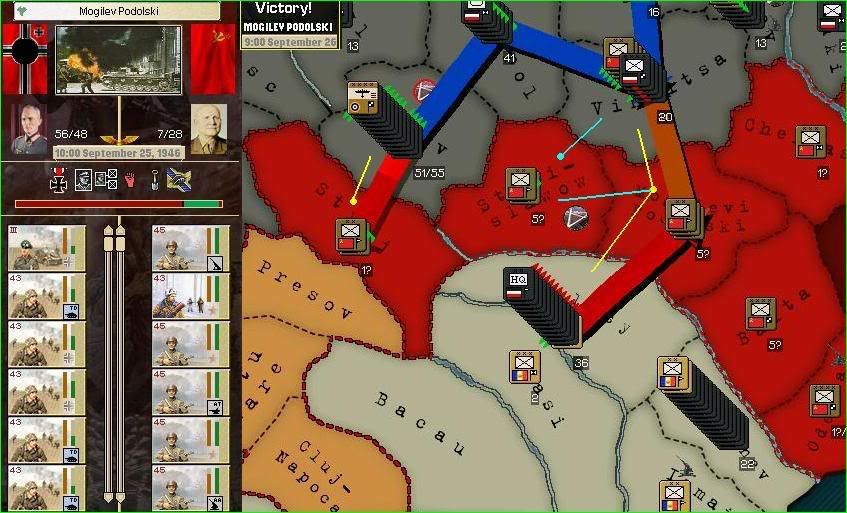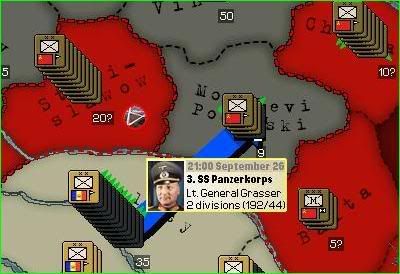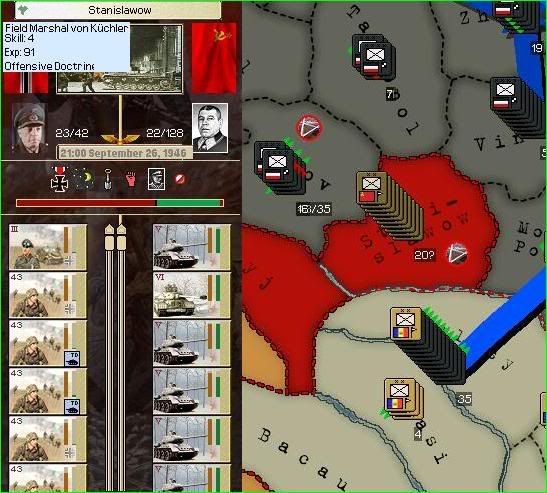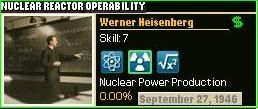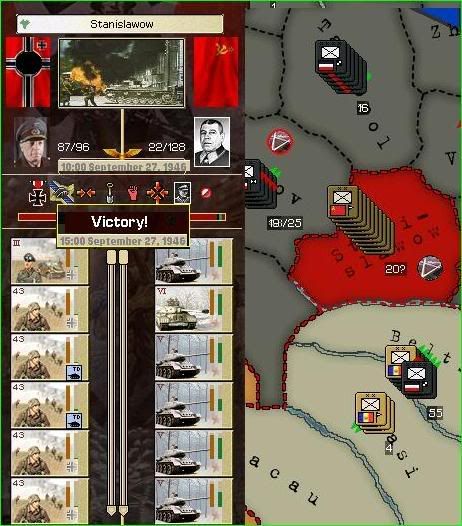Die rote Götterdämmerung
1000 August 4th 1946
Korosten, Soviet Union
Although the Ukraine was fairly well defended by the remnants of the Soviet Army, several units failed to catch up with the Soviet retreat in the Ukraine and fell into several pockets very quickly. The Zhlobin pocket was one of these.
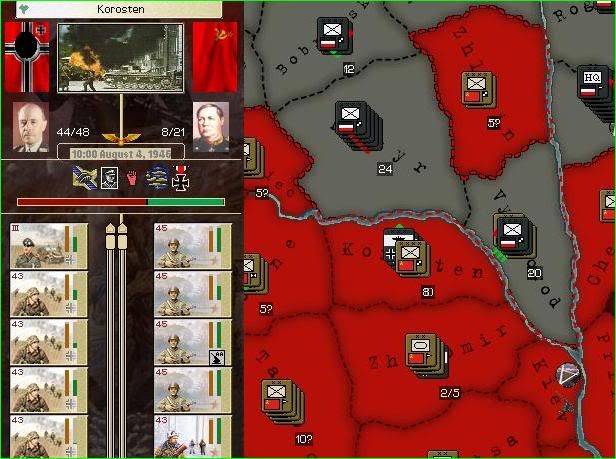
The pocket was not immediately taken care of, however; instead, orders were given to continue to advance towards the northern border of the Ukraine; Korosten, holding eight Soviet divisions, had been chosen as the new target for forty-four German divisions; however, the troops' weariness after weeks of constant fighting and movement, the Dnepr and the marsh terrain, turned this battle into a standoff: this wasn't the breakthrough point the Germans were looking for, and so the attack was abandoned; Soviet defenses were to be pinpointed and attacked elsewhere.
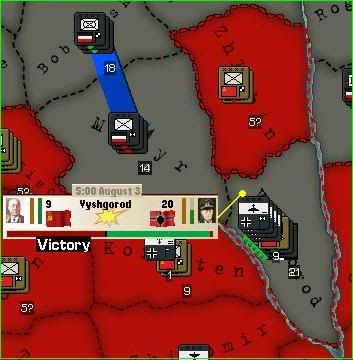
The Soviets had made the same mistake, however, as they thought that their eight divisions could beat forty-four of the Wehrmacht, even if tired. The attack was easily repulsed, and the troops were finally put at rest.
1000 August 5th 1946
Zhlobin, Soviet Union
German divisions in the rear took care of the Zhlobin pocket and, after two days of fighting, led nine Soviet divisions to extinction.
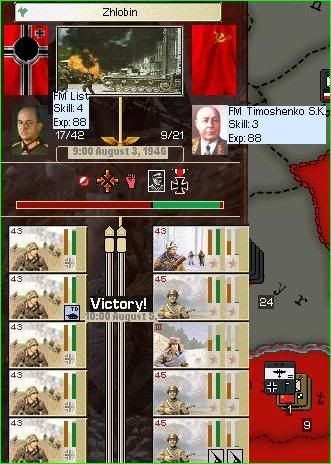
Timoshenko led the trapped forces, but he was not found once the divisions surrendered.
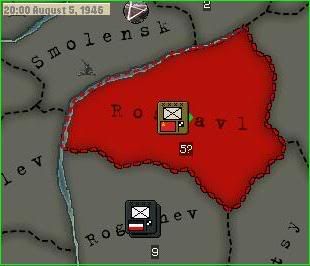
Further north, at the outskirts of Smolensk, an entire Soviet corps fell behind the fast advance of the Wehrmacht; nineteen divisions led by Hausser were eager to score yet another victory and the few and scattered Soviet forces were easy prey for the maneuverable divisions of the Wehrmacht.
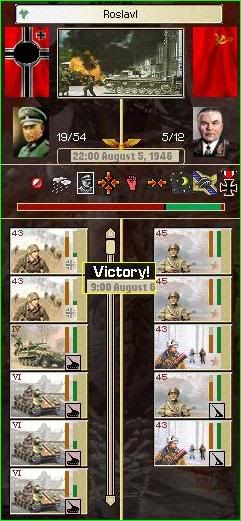
The battle was over fairly quickly: after an eleven-hours long debate, the Soviets realized they'd better give in to Hausser's friendly requests of surrender.
0000 August 10th 1946
Intelligence Dept., Berlin, Germany
The Kriegsmarine had never been Germany's vaunt, and even in its months of glory it never placed a severe risk to the Royal Navy; only the Bismarck aroused fear among the British sailors, and with the Bismarck serving as a giant aquarium, only the U-boote were a menace to Allied shipment.
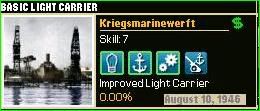
Once the German scientists started researching Light Carriers, however, one could easily grasp what direction the Kriegsmarine was taking: an impressive surface fleet.
0000 August 12th 1946
Korosten, Soviet Union
A week after the failed attempt at breaching the Soviet lines, another attack was ordered across the Dnepr, this time with Luftwaffe support.
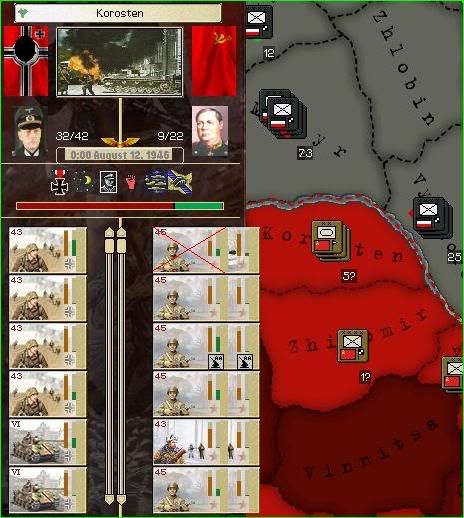
Soviet resistance crumbled quickly, even if both sides were battle-weary. Casualties rised quickly among the Soviet forces, however, even with the Dnepr offering more than a headache to the German advance.
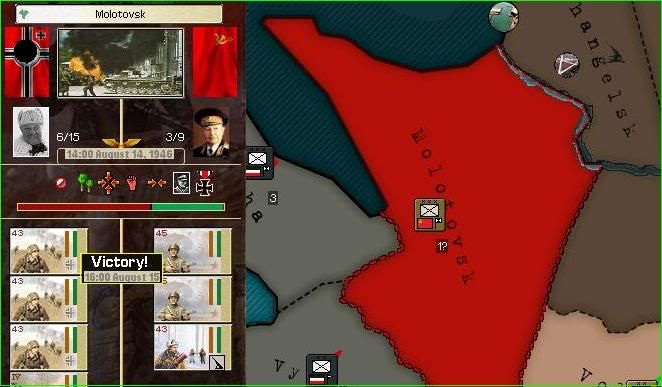
The British kindly made the Germans a favor, as three Soviet divisions were trapped by the fast advance of British troops in Soviet soil. German divisions quickly closed the pocket and approached the outskirts of Archangelsk; the British were becoming too much big of a presence to be tolerated.
0000 August 16th 1946
XXVII. Korps, Priluki, Soviet Union
By mid-August, virtually no progress had been achieved to breach the Soviet defenses, although several Soviet divisions were either destroyed by encirclements, or thoroughly pounded by the Luftwaffe and the constant attacks.
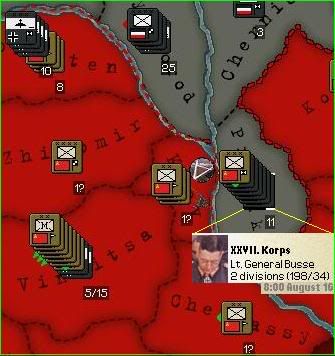
Busse reached the outskirts of Kiev, but he could do little with the current Soviet defenses in the city, which prevented any frontal assault.
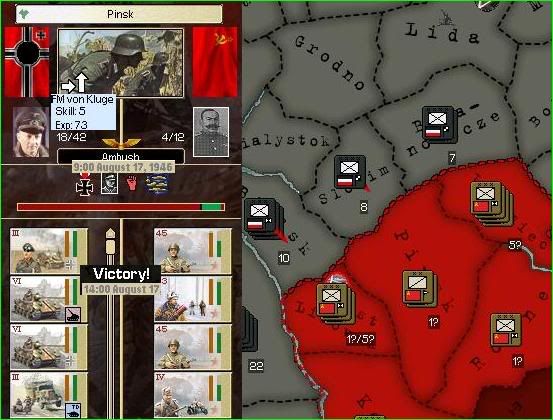
Too little pressure was being applied on the Soviets. Therefore, the involvement of von Kluge was ordered; on August 17th, his attack on the Soviet westernmost defenses, on Pinsk, virtually rendered four Soviet divisions useless. Soviet reinforcements, however, would slow down von Kluge's advance as the days passed.
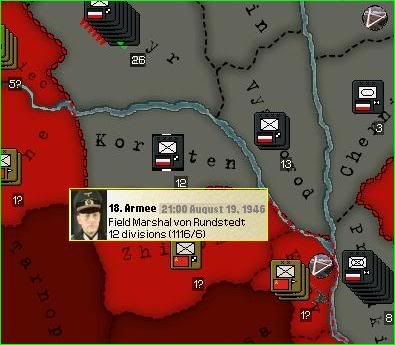
In the meanwhile, von Rundstedt finally crossed the Dnepr as he took Korosten; his troops, while extremely tired, were ordered not to stop there and attack Zhitomir: the Soviets were not to be given a single minute of respite.
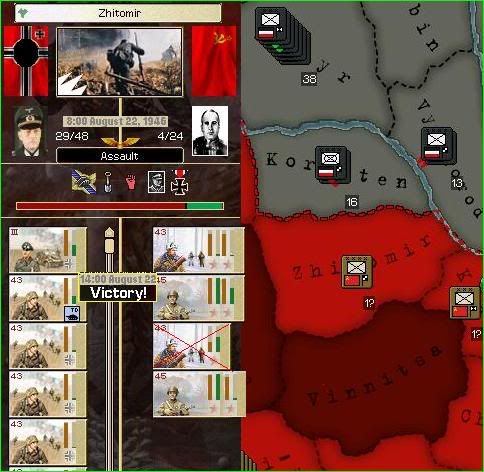
Even if tired, twenty-nine divisions easily crushed the four-divisions strong defense of Zhitomir, now that the Dnepr was no longer able to defend them. The opposite, however, was true also; even if this battle cost the Soviets yet another division, von Rundstedt's forces were now too disorganized to continue the advance at this pace.
1400 August 23rd 1946
19. Armee, Kaluga, Soviet Union
Another pocket in the North was taken care of by General Fromm.
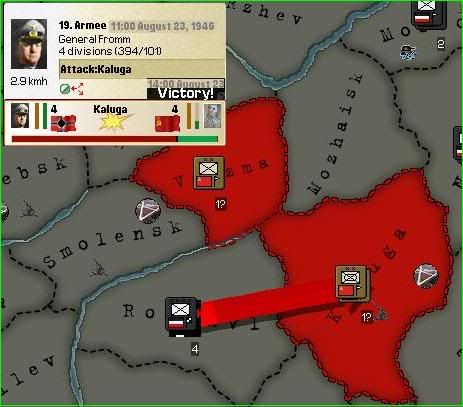
They had some kind of attachment to Smolensk, if they preferred advancing on that direction rather than seeking a way out of that encirclement.
0600 August 24th 1946
18. Armee, Zhitomir, Soviet Union
Von Rundstedt finally reached the outskirts of Kiev, but in awful conditions. While his divisions took very few casualties, they had not taken a single day of rest for weeks.
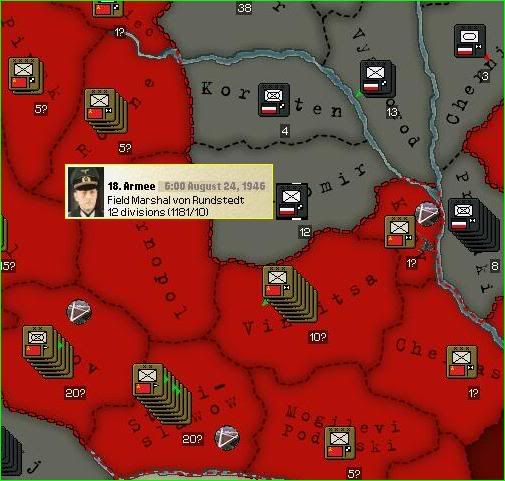
There were too many Soviet divisions around him to hope that he could hold his position for long. Encircling the whole of the Ukraine by taking Vinnitsa and Stanislawow was a remote possibility.
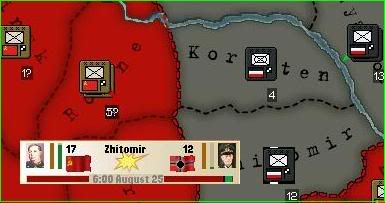
The Soviets did not take von Rundstedt's intrusion lightly and the following day seventeen Soviet divisions made von Rundstedt run back to his tail.
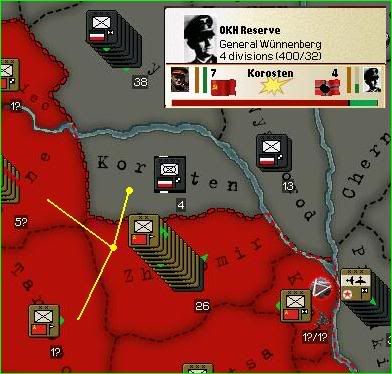
Not happy with that, the Soviets pursued the retreating German forces up to Korosten: von Rundstedt was once again on the other side of the Dnepr and achieved nothing but a waste of time, and some Soviet divisions destroyed. In the end, however, this would prove fatal to the Soviet lines.
0500 August 26th 1946
Pinsk, Soviet Union
Even if the Soviet lines held strong, there were not enough divisions to replenish every hole: it was only because of von Rundstedt troops' weariness that the Soviets could push them back, and even then they shouldn't have allowed such a major breach of their defense line. With von Kluge applying an ever increasing amount of pressure in their western flank, furthermore, they could not hope to hold forever.
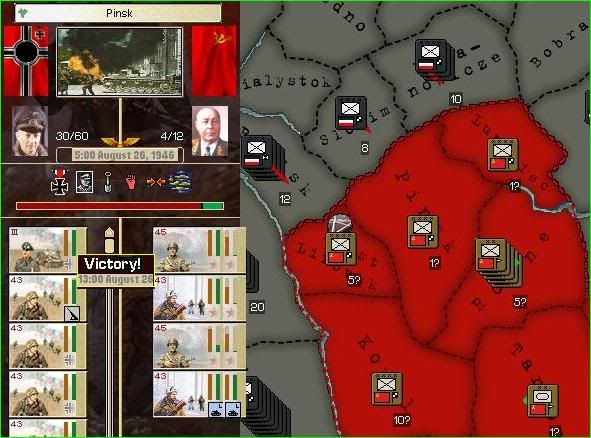
Four more Soviet divisions made little to halt von Kluge's advance, and so did whichever force the Soviets threw in at him.
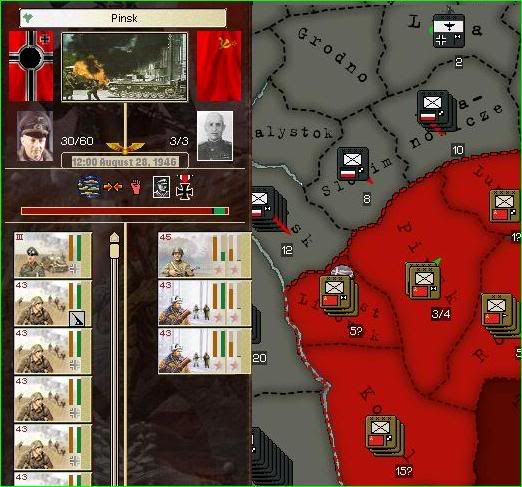
Just to prove the point, three more Soviet divisions were thrown into the fray two days after. The more divisions they wasted this way, the weaker their lines were growing.
0900 August 29th 1946
Heeresgruppe Nord, Soviet Union
German forces in the North isolated the Vyazma and the Klintsy pockets, totalling six divisions.
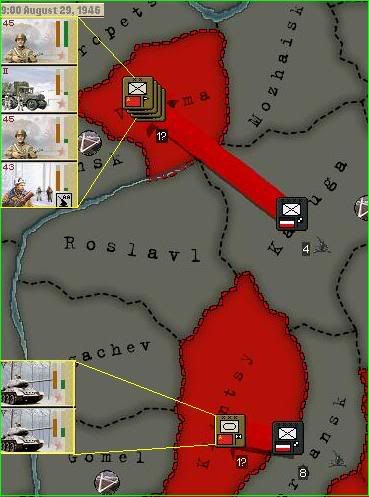
The two battles would be over quickly, and so would be six Soviet divisions.
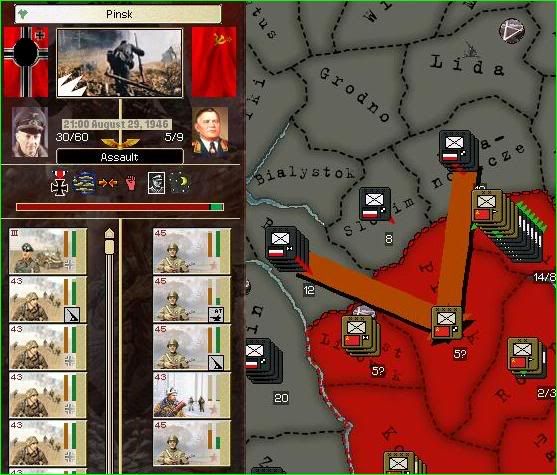
Perhaps the last attempt at stopping von Kluge's attack was made with five more Soviet divisions on August 29th. Needless to say, von Kluge's thirteen divisions were not in the same shape of von Rundstedt's, and could withstand many days of prolonged warfare, unlike his Soviet counterparts, battered in casualties and organization.
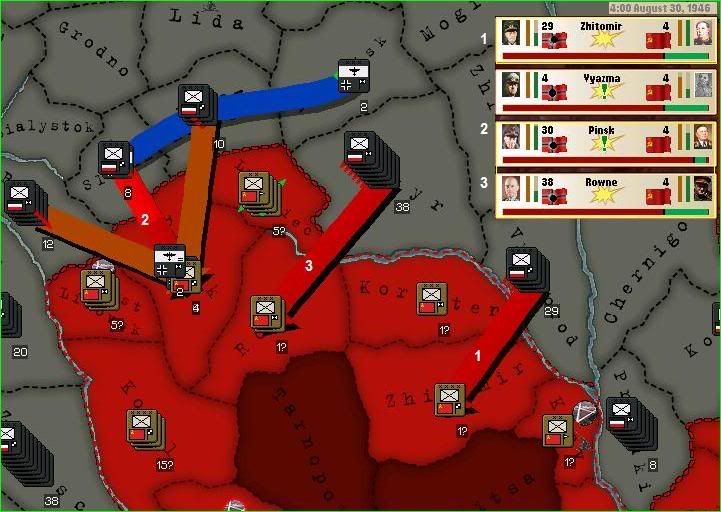
Finally, the time was deemed right to begin a full-scale attack on the Soviet lines: von Kluge was pressing on Pinsk, drawing Soviet divisions away from the Dnepr, and von Rundstedt had rested for one week. At 0400 on August 30th, two attacks were ordered, invonving 67 German divisions, all along the Dnepr, in Rowne and Zhitomir, against eight Soviet divisions in total, aiming to destroy the now feeble Soviet opposition, whose strenght had been drained in favor of the defense of Pinsk. While the Soviets were favoured by the marsh terrain and the river, this time the well-rested troops under von Rundstedt's command would stop at nothing.



